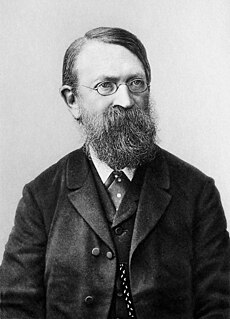 |
| Aristotle, marble portrait bust, Roman copy (2nd century BC) of a Greek original |
Our 21st-century world boasts a highly interconnected society, unprecedented technological development and increasing democratization all over the world, yet scientific literacy is lagging behind. Even science seem to be struggling with some basic questions, such as time, gravity or space. In many ways we still think in terms absolute time and space, inherited from Newtonian physics, However, the need for unique reference frame contradicts some basic, contemporary requirements of science, such as Mach's principle, which disfavors the existence of a particular orientation, i.e., reference frame. Although in a different context, the scientific and philosophical principle was debated since antiquity. For example, Aristotle viewed space only epitomizing the place of objects. Newton, however, built his theory on absolute space.
Aristotle's idea was reformulated in Mach's principle, which strongly motivated Einstein. According to Mach's principle, all locations and all motions are relative; the results of the measurements should not depend on the choice of coordinates assigned to events. Inertial mass is determined by the mass distribution of the universe and inertia is caused by the gravitational action of distant matter. Mach's revolutionary insight is the realization of the impossibility to measure changes with time. "Time is the abstraction at which we arrive by the changes of things." Nevertheless, in contrast to its name, 'relativity' it still contains absolute elements and does not resolve the problem of the origin of inertia and fails to follow Mach's principle.
Let's examine the global picture of the universe about Mach's principle. It is known that black holes have immense field strength. Current findings even show that black hole horizons are information blocking, two-dimensional firewalls that cannot be approached. This is only possible if black holes form the outer boundary of the universe. In this case, Mach's principle is automatically followed due to dimensionality differences of space. The exponentially increasing field strength close to the black holes would lead to greater inertia and the smaller field strength in cosmic voids would generate small inertia.
Aristotle's idea was reformulated in Mach's principle, which strongly motivated Einstein. According to Mach's principle, all locations and all motions are relative; the results of the measurements should not depend on the choice of coordinates assigned to events. Inertial mass is determined by the mass distribution of the universe and inertia is caused by the gravitational action of distant matter. Mach's revolutionary insight is the realization of the impossibility to measure changes with time. "Time is the abstraction at which we arrive by the changes of things." Nevertheless, in contrast to its name, 'relativity' it still contains absolute elements and does not resolve the problem of the origin of inertia and fails to follow Mach's principle.
Let's examine the global picture of the universe about Mach's principle. It is known that black holes have immense field strength. Current findings even show that black hole horizons are information blocking, two-dimensional firewalls that cannot be approached. This is only possible if black holes form the outer boundary of the universe. In this case, Mach's principle is automatically followed due to dimensionality differences of space. The exponentially increasing field strength close to the black holes would lead to greater inertia and the smaller field strength in cosmic voids would generate small inertia.
 |
| Ernst Mach, Austrian physicist, and philosopher |
In the Aristotelian view, a vacuum does not exist. In Newtonian physics vacuum is just a void, in quantum mechanics vacuum energy gives rise to virtual particles, in a process of constant creation and annihilation, and dictated by the Heisenberg uncertainty principle. The universe might agree with Aristotle with a twist, however. If a vacuum would increase the dimensions of the universe, then a vacuum would lead to the expansion of space and lead to the experience of dark energy. This vacuum would generate a pressure at opposite regions i. e., the black holes of the universe. The pressure extends into gravitational regions as excess gravity, called dark matter. This simple, organically unified picture of the cosmos leads to an intuitive understanding of space and time as fundamental, interconnected fields. More information can be found in my book, 'The Science of Consciousness.' Such organic unity of the cosmos certainly would fit well with Aristotle.
Sign up for my mailing list to never miss a post.
No comments:
Post a Comment